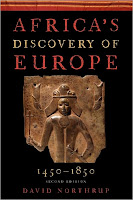 The Conscience of a Libertarian: Empowering the Citizen Revolution with God, Guns, Gambling and Tax Cuts
The Conscience of a Libertarian: Empowering the Citizen Revolution with God, Guns, Gambling and Tax Cutsby Wayne Allyn Root
In today's turbulent economy, more and more people are growing concerned about their financial future and looking for answers that make sense. While the government attempts to "fix" the problems created by the credit crunch and subprime crisis, the fact is that in order to improve America's economic future, government intervention must be limited.
In The Conscience of a Libertarian, Libertarian Party vice presidential nominee and frontrunner for the 2012 Presidential nomination Wayne Allyn Root presents a passionate case for the dramatic overhaul of governmental programsand policies that are essential for the continued survival of the American Dream. Focusing on the need to shrink the size of government—including the elimination of the IRS—Root proposes the dramatic reduction of government spending, lowering entitlements, reducing bureaucracy, increasing market freedom, reducing the tax burden on all Americans, and an end to the nanny state among many other ideas.
Divided into four comprehensive parts—A Revolution Is Brewing, Let's Talk Money and Politics, Solutions for the Mess We Are In, and Protecting and Preserving Our Inalienable Civil Liberties—The Conscience of a Libertarian puts our current situation in perspective and reveals what it will take to overcome the enormous obstacles we face.
Throughout these pages, Root also shares his thoughts on what he believes the government should do to improve our situation—and bring money back to the American taxpayer—including: upgrade the education system on the state level; foster investment to provide workers with more capital; lower the income tax rate to empower Americans to save the money needed to invest in stocks, real estate, and business start-ups; encourage reasonable risk and entrepreneurship; and eliminate corporate welfare.
It's time for a new revolution, a Citizen Revolution led by a Citizen Politician. Just as our Founding Fathers intended, Root's goal is to give the power back to you, the citizens and taxpayers. Focusing in part on his home state of Nevada—which represents smaller government, has among the lowest tax rates in America, and continuously promotes personal and economic freedom—Root examines what happens when his principles are applied to state government, and reveals how the American Dream can survive and thrive during this current economic crisis.
Wayne Allyn Root is one of the most charismatic, fiery, outspoken, and controversial political personalities in America today. He was the 2008 Libertarian Party vice presidential nominee. A college classmate of Barack Obama at Columbia University, he is now the leading contender for the Libertarian presidential nomination in 2012. Root is the son of a butcher, small businessman, and homeschool dad—the quintessential "Citizen Politician" envisioned by America's Founding Fathers. A former anchorman and host on Financial News Network (now known as CNBC), his business and political careers have been profiled by CNBC, the New York Times, the Wall Street Journal, and Time magazine, among others.








































